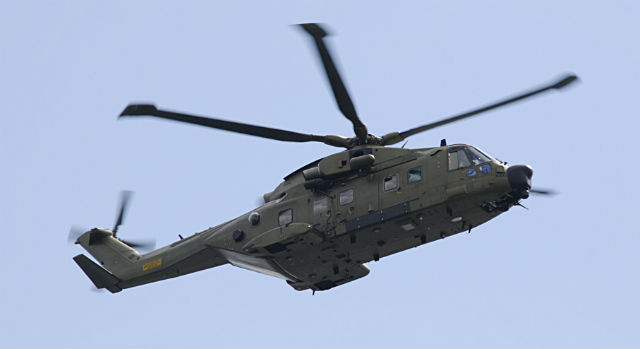The Royal Danish Air Force (RDAF) will, in mid-March, begin ship-borne qualification trials of its AgustaWestland AW101 rotorcraft.
Designed to address a potential capability gap in the service's helicopter fleet, the effort will see a Merlin from 722 Sqn operating from a Royal Danish Navy frigate, says Col Steen Ulrich, commander of the air force’s helicopter wing.
Qualification of the Merlin to operate from ships will help mitigate the effects of a possible manpower shortage caused by the approaching delivery of the first three of nine Sikorsky MH-60R Seahawks.
The US-built helicopters will replace the RDAF's Westland Lynx 90s for anti-submarine warfare missions and ahead of their arrival, Lynx crews will be withdrawn from frontline duties for conversion to the new type, says Ulrich.
“And it will take at least one year before the Seahawk starts producing anything of value for us," he says.
Although integration of the new fleet has been carefully planned, there is little room for error. “We have a potential capability gap in 2016/17 that can be closed partly by deploying Merlin on ships,” said Ulrich, on the sidelines of the IQPC International Military Helicopter conference in London last week.

REX/Shutterstock
“We also have some very expensive navy platforms and a relatively expensive Merlin – not trying to get full capability out of those investments would be a mistake,” he says. Flightglobal's Fleets Analyzer database lists Denmark as operating 14 of the 15.6t, UK-built helicopters.
Once qualified, the AW101s could be used for tasks ranging from humanitarian assistance to troop transport for assault missions, he says.
In addition, the RDAF will shortly conduct firing tests using a door-mounted .50cal machine gun. If certificated, this would bolster the AW101’s armament, presently confined to three 7.62mm light machine guns.
Meanwhile, the service continues its preparations for the arrival of its first Seahawks. Three examples will be delivered in May, says Ulrich, with a further pair to arrive later this year. These will be followed by two each in 2017 and 2018.
No torpedoes have been specified on the helicopters, but they are configured to carry them and are likely to eventually be acquired.
“In a couple of years, when we are integrated with the Seahawk, I’m sure we will look at weapons,” he says.
Source: FlightGlobal.com
















